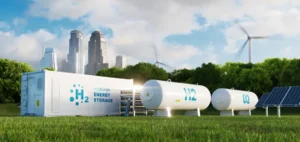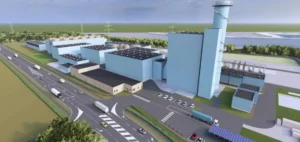Commissioner Simson inaugurated her first visit to Uruguay by attending the fifth European Energy Investment Forum. During her speech, she expressed her gratitude to the Minister of Industry, Energy, and Mines, Ms. Elisa Facio, for her warm welcome and highlighted the importance of strengthening energy relations between the European Union (EU) and Uruguay. This meeting marks a significant milestone in the implementation of the Energy Memorandum of Understanding, aiming to deepen bilateral cooperation in the energy sector.
The Commissioner also thanked Mr. Nicolas Albertoni, Acting Minister of Foreign Affairs, for his opening remarks and active participation in the forum. She emphasized the alignment of multilateral agendas for a global energy transition, affirming that the EU is committed to supporting its partners in this crucial endeavor.
Energy Transition in Uruguay
During her recent visit to the Minas wind farm, located two hours from the forum venue, Commissioner Simson closely observed the advancements of the green transition in Uruguay. She described this wind farm as a tangible example of the country’s impressive efforts to position itself as a renewable energy hub in the region. Uruguay has considerable potential to become a future supplier of green hydrogen and other sustainable fuels for the EU market.
Simson detailed Uruguay’s favorable attributes, including abundant and complementary wind and solar energy, advanced electrical infrastructure, and an adequate supply of freshwater. She also mentioned the country’s political stability and strong legal framework as decisive factors for attracting European investments in the green hydrogen sector.
REPower EU Strategy
The Commissioner addressed the significant impact of the war in Ukraine on EU energy policy. Even before the invasion, Europe’s dependence on Russian gas imports was alarming. Faced with the Kremlin’s weaponization of gas supplies, the EU was confronted with an unprecedented energy crisis. However, thanks to European unity and solidarity, this crisis was transformed into an opportunity to accelerate the transition to clean energy and strengthen energy security.
Under the REPower EU strategy, the EU implemented a plan to diversify its energy sources, accelerate the transition to clean energy, and save energy. After two years, the results are tangible, with a remarkable 18% reduction in gas consumption and a drastic decrease in Russian natural gas imports, dropping from 45% to 18% of total EU energy imports.
Green Hydrogen as a Decarbonization Pillar
A key objective of REPower EU is to accelerate the deployment of green gases to replace the use of Russian natural gas while reducing the carbon footprint. Green hydrogen is a technology with enormous potential to decarbonize key polluting sectors. Since 2020, Commissioner Simson has spearheaded many initiatives to develop this market, ranging from infrastructure to auctions.
The EU has adapted its regulations to provide certainty for investors and project developers and has launched the European Hydrogen Bank to generate investment security and open up new business opportunities for global and European hydrogen production. Mandatory targets have been set for certain sectors, stimulating demand, accompanied by certification schemes for renewable hydrogen, ensuring that the hydrogen produced is clean and derived from renewable energy sources.
Investments and Strategic Partnerships
Simson emphasized that investments in green hydrogen will stimulate growth and create jobs in sectors such as manufacturing, installation, and maintenance of hydrogen production facilities and electrolysers. She also highlighted the importance of partnerships with countries with strong renewable energy potential, like Uruguay, to establish clean energy trade corridors.
The EU is the largest investor in Uruguay, accounting for 41% of total foreign direct investments, with an even higher proportion in the energy sector. The Commissioner announced the signing of a Memorandum of Understanding on “renewable energy, energy efficiency, and renewable hydrogen” with Uruguay’s Foreign Minister, laying the foundations for future energy cooperation. Furthermore, Uruguay was approved for the bilateral framework agreement with the European Investment Bank (EIB), enabling financing for public and private energy projects in Uruguay, with a particular focus on green hydrogen.
These agreements are part of the EU’s Global Gateway investment agenda, which will mobilize €300 billion for high-quality and sustainable projects worldwide. The Memorandum of Understanding is already yielding results, with high-level dialogue between both parties’ authorities advancing and cooperation projects progressing.
Commissioner Simson concluded by announcing €2 million in EU funding to implement the Uruguayan Green Hydrogen Roadmap, one of the country’s top energy priorities.






















